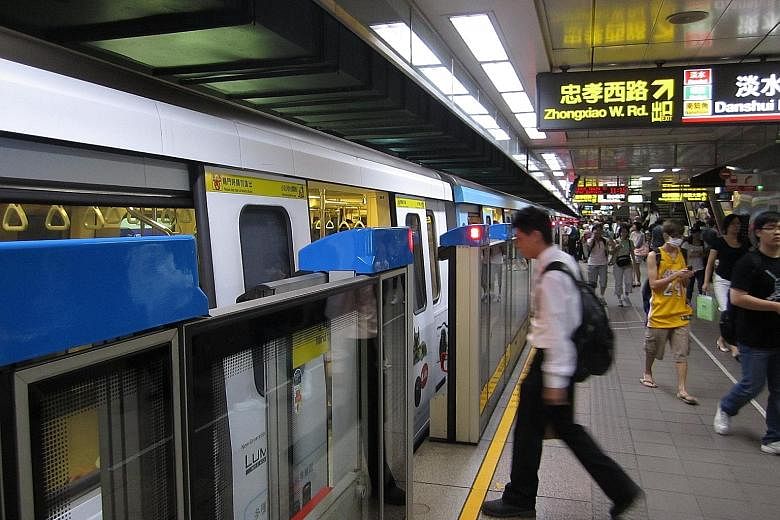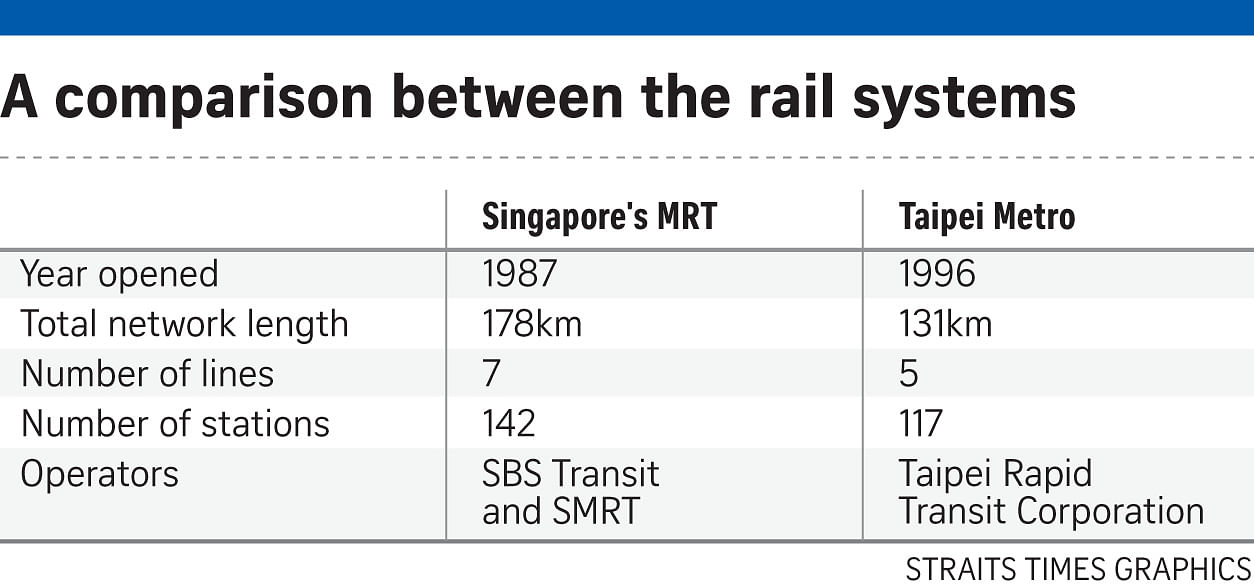Lauding the Taipei metro system for its reliability, Transport Minister Khaw Boon Wan yesterday urged rail operators SBS Transit and SMRT to emulate it.
Mr Khaw said the Taipei Rapid Transit Corporation's (TRTC) organisational structure, engineering excellence and the passion of its staff have allowed it to achieve remarkable train reliability.
He was sharing the findings of a study trip to Taipei two weeks ago, which was led by Land Transport Authority (LTA) chief executive Chew Men Leong.
At a rail infrastructure maintenance forum in Singapore yesterday, Mr Khaw said for the TRTC, reliability is the most important performance indicator, after safety.
To ensure that reliability metrics are understood by all, targets are set for individual departments and their directors.
"There is strong and tangible ownership of service reliability at all levels, from the chairman of the board, down to the president, management groups, engineers (and) the mechanics," he said.
The TRTC also systematically captures and analyses data relating to the condition, maintenance and performance of its assets, Mr Khaw said, which it uses to build up its engineering knowledge.
The corporation performs timely maintenance and replacement of assets on the rail network. To pay for asset replacements, it maintains a healthy "sinking fund" that the engineering department can draw from. In the last five years, the TRTC has contributed annually between $135 million and $204 million.
The TRTC has invested heavily in developing its maintenance-engineering capabilities, and also set up an electronics research and development laboratory. Mr Khaw said the corporation places an emphasis on fast response to technical incidents and prompt troubleshooting of problems, and deploys up to 250 employees daily to do this.
In response, both SBS and SMRT said they are working to implement the best practices from the Taipei metro system, and have been stepping up efforts to beef up reliability.
Mr Gan Juay Kiat, chief executive of SBS Transit, said: "For instance, we invest extensively in systems and equipment to help in monitoring and maintenance works, regularly review our maintenance regime, as well as continually upgrade the skills and professional competency of our engineering staff."
Mr Lee Ling Wee, managing director of SMRT Trains, said it has deployed sensors since two years ago to monitor the condition of its rail assets to see when to replace them.
National University of Singapore transport researcher Lee Der Horng said the TRTC is owned by the Taipei government and has no shareholders - a key difference from SBS and SMRT.
"TRTC directly answers to the Taipei city council if it does not take care of the commuters' benefit and welfare," Dr Lee said.



